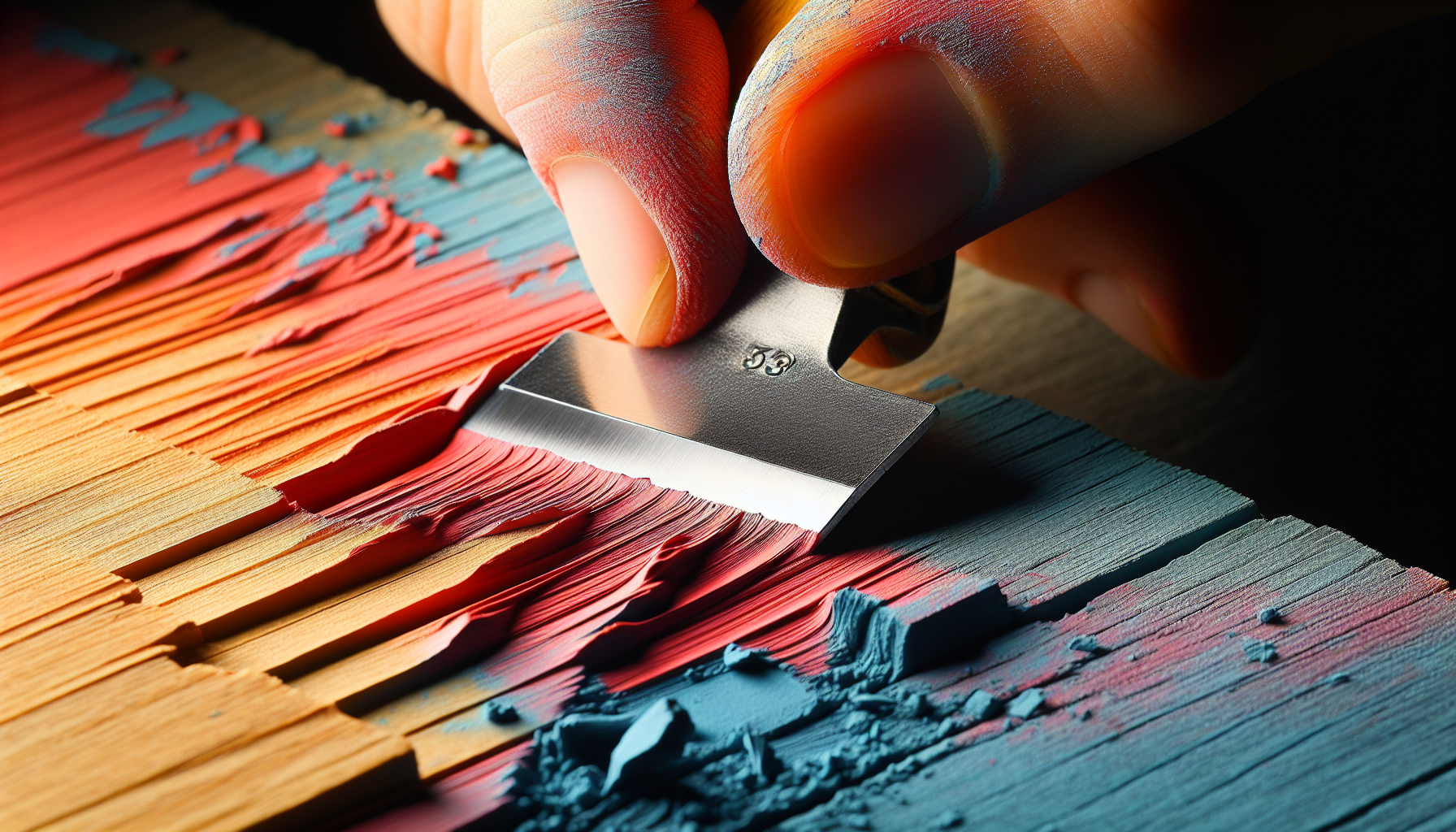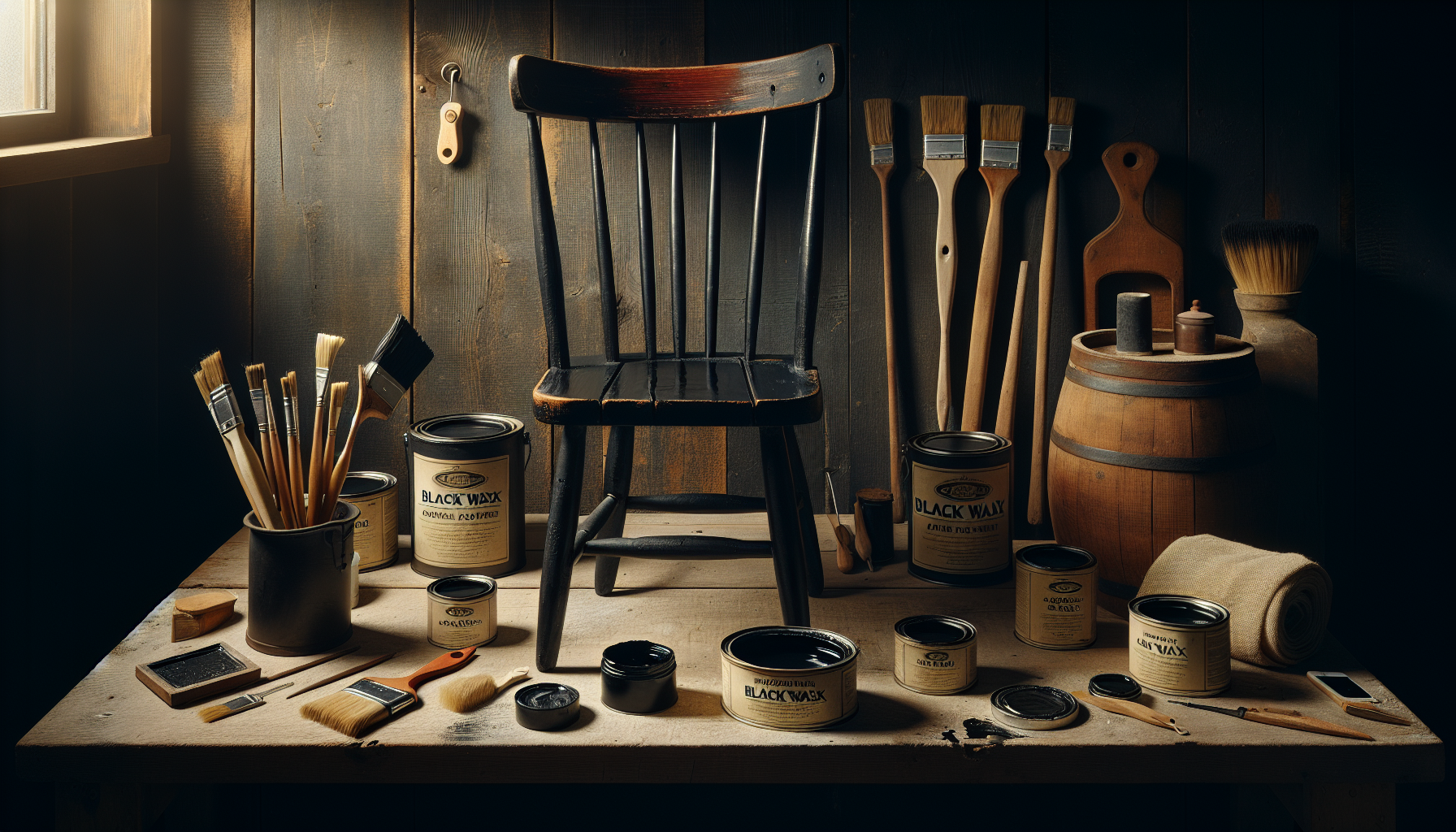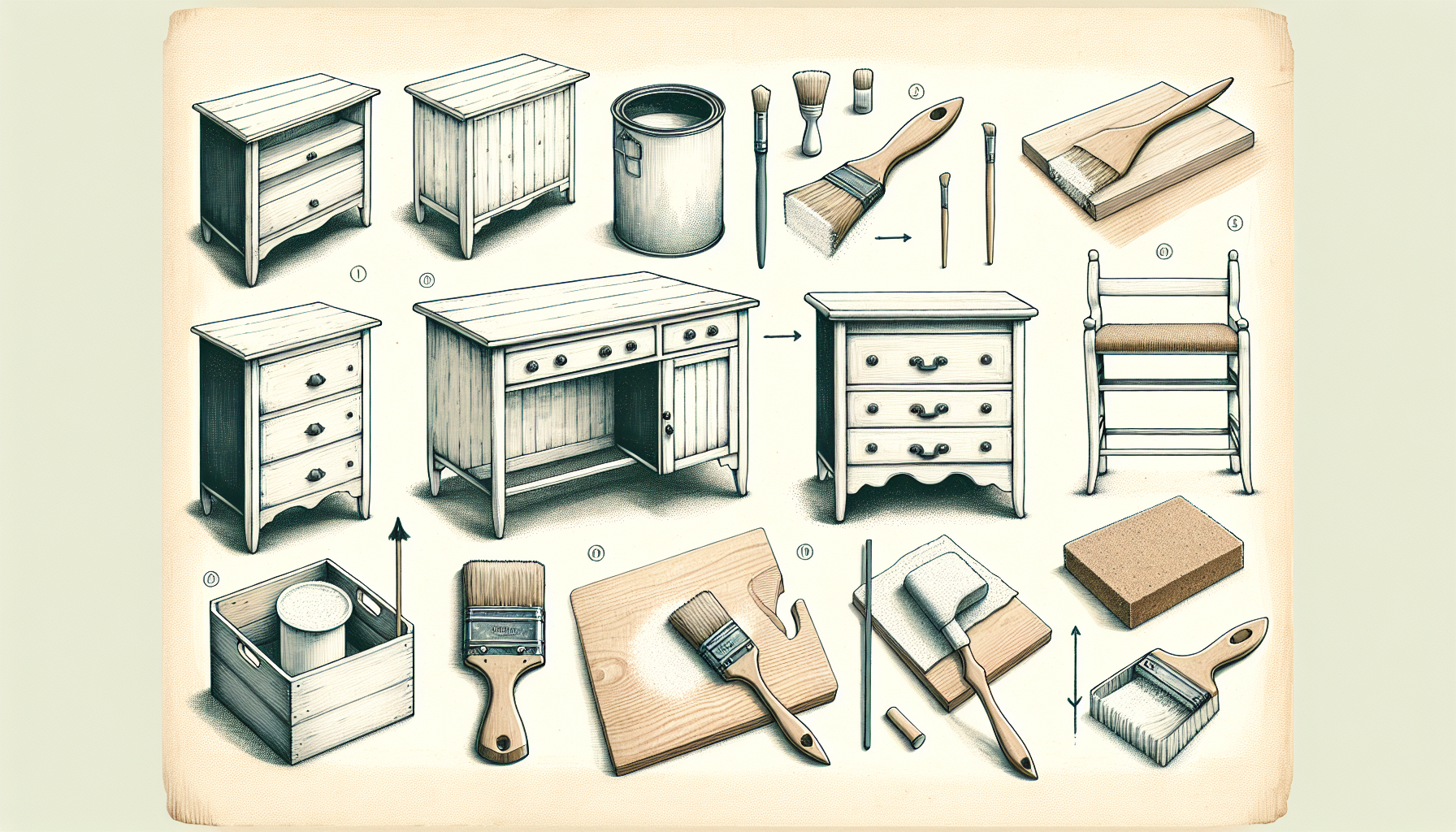If you have ever found yourself struggling to remove chalk paint from various surfaces, this article is for you. By following our expert advice and using the right techniques, you will learn how to effectively get chalk paint off without causing any damage. From furniture to walls, we will guide you step by step through the process, saving you time and frustration.
How to Remove Chalk Paint: A Comprehensive Guide
Supplies Needed
Before we delve into the various methods to remove chalk paint from different surfaces, let’s ensure that you have all the necessary supplies on hand. To successfully tackle this task, you will need:
- Plastic scraper
- Soft cloth
- Bucket of warm water
- Mild detergent
- Vinegar
- Rubbing alcohol
- Mr. Clean Magic Eraser
- Gloves
- Protective eyewear
- Drop cloth
Preparation
Preparing the area and ensuring your safety is crucial before starting the paint removal process. Follow these steps:
1. Cover the Area
To protect the floor or surrounding surfaces, spread a drop cloth or plastic sheeting over the area to catch any debris or paint chips that may come loose during the removal process.
2. Wear Protective Gear
Since paint removal involves the use of chemicals and physical scrubbing, it is essential to wear gloves to protect your hands from any potential skin irritation. Additionally, wear protective eyewear to shield your eyes from any loose particles or chemical splashes.
3. Ventilate the Room
Ensure proper ventilation by opening windows or using fans to circulate fresh air. This will help reduce any potential fumes from the paint removal process and create a healthier environment for you to work in.
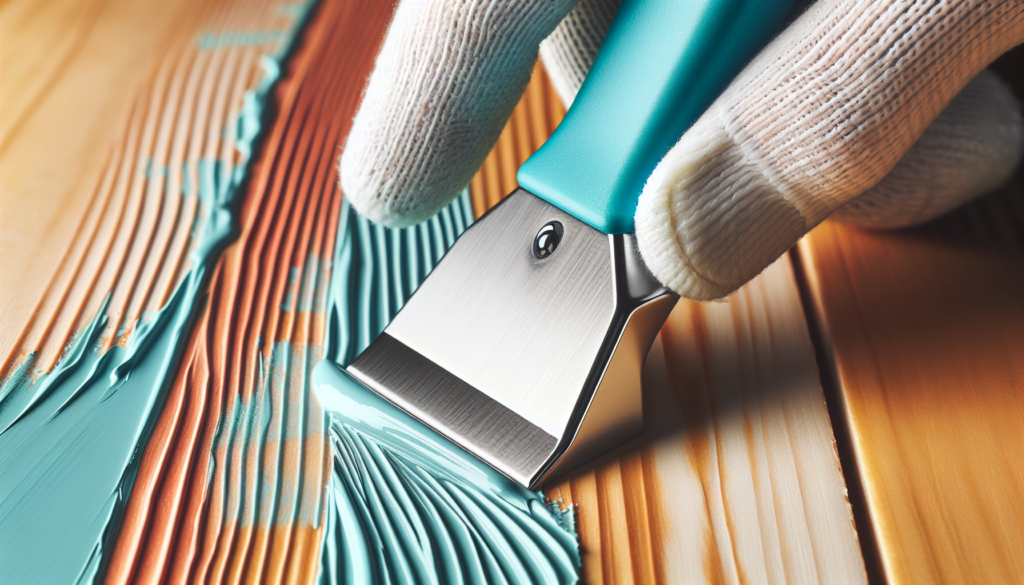
Removing Chalk Paint from Different Surfaces
Chalk paint removal techniques may vary depending on the surface you’re dealing with. Here are the specific methods for removing chalk paint from wood, glass, metal, fabric, concrete, and plastic surfaces.
Wood
When removing chalk paint from wood surfaces, follow these steps for best results:
1. Scrape off Loose Paint
Begin by using a plastic scraper to gently scrape off any loose or peeling paint from the wood surface. Be careful not to apply too much pressure to avoid causing damage.
2. Apply Warm Soapy Water
Fill a bucket with warm water and add a small amount of mild detergent. Dip a soft cloth into the soapy water and wring it out until it is damp but not soaked.
3. Gently Scrub the Surface
Using the damp cloth, gently scrub the chalk-painted wood surface. Make sure to cover the entire area, focusing on any stubborn spots.
4. Rinse with Clean Water
Once you have thoroughly scrubbed the surface, rinse the cloth with clean water. Use the damp cloth to rinse off any soap residue from the wood.
5. Allow to Dry
After rinsing, allow the wood surface to air dry completely before proceeding. This will prevent any potential damage from moisture and ensure the paint removal process is effective.
6. Repeat if Necessary
If traces of chalk paint remain after the initial removal attempt, repeat the process until the surface is completely free from paint.
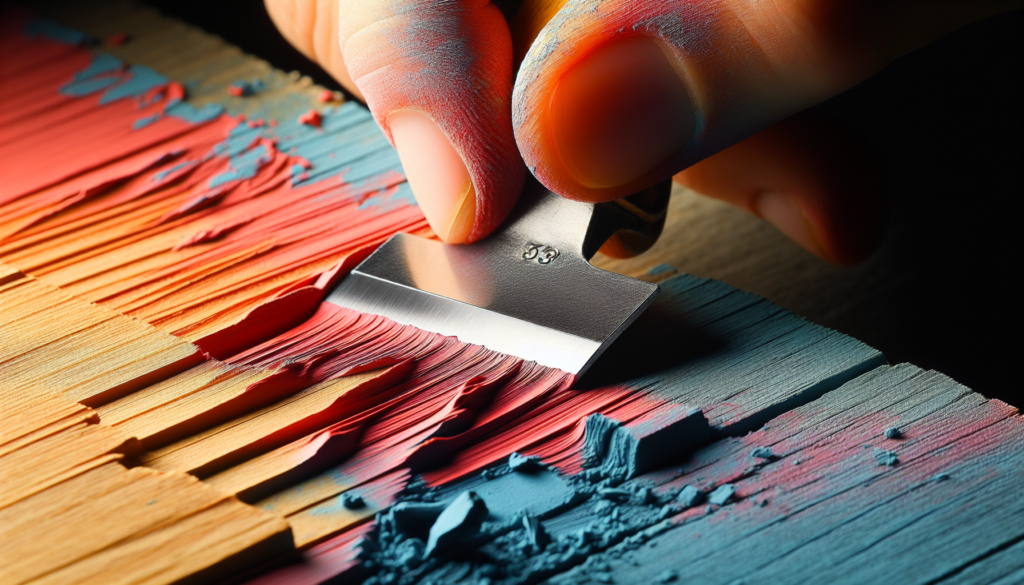
Glass
Chalk paint removal from glass surfaces requires special care to avoid scratching or damaging the glass. Follow these steps:
1. Scrape off Excess Paint
Use a plastic scraper to carefully scrape off any excess chalk paint from the glass surface. Be cautious not to scratch the glass while doing so.
2. Dampen a Soft Cloth
Dampen a soft cloth with either rubbing alcohol or vinegar. Both can effectively dissolve and remove the paint without damaging the glass.
3. Apply Rubbing Alcohol or Vinegar
Gently rub the painted area on the glass surface with the damp cloth. The rubbing alcohol or vinegar will help dissolve the paint and make it easier to remove.
4. Rinse with Water
After thoroughly rubbing the painted area, rinse the glass surface with clean water to remove any remaining paint residue and cleaning solution.
5. Dry with a Clean Cloth
To prevent streaking or water spots, dry the glass surface using a clean cloth. Ensure that no paint residue or moisture is left behind.
Metal
To remove chalk paint from metal surfaces, here are the steps to follow:
1. Scrape off as Much Paint as Possible
Using a plastic scraper, gently scrape off as much chalk paint as possible from the metal surface. The goal is to remove the majority of the paint before proceeding with further cleaning.
2. Soak a Cloth in Warm, Soapy Water
Fill a bucket with warm water and add a small amount of mild detergent. Soak a cloth in the soapy water and wring it out until damp.
3. Rub the Painted Surface Gently
Take the damp cloth and gently rub the painted surface on the metal. The soapy water will help to dissolve and lift the remaining paint.
4. Rinse with Clean Water
Once you have thoroughly cleaned the painted area, rinse the metal surface with clean water to remove any soap residue.
5. Dry Thoroughly
To prevent any potential rusting, make sure to dry the metal surface thoroughly using a clean cloth. Ensure no moisture is left behind.
Fabric
Removing chalk paint from fabric requires a slightly different approach. Follow these steps:
1. Scrape off Any Excess Paint
Using a plastic scraper, carefully scrape off any excess chalk paint from the fabric surface. Be gentle to avoid damaging the fabric fibers.
2. Apply Rubbing Alcohol or Vinegar
Dampen a clean cloth with either rubbing alcohol or vinegar and gently blot the painted area. The alcohol or vinegar will help dissolve and lift the paint off the fabric.
3. Blot the Area with a Clean Cloth
Continue blotting the fabric with a clean cloth until the paint begins to dissolve. Be patient and persistent, as this may take a few attempts.
4. Repeat Until the Paint Dissolves
If the paint is stubborn and not fully dissolving, repeat the process until the fabric is free from chalk paint. Be cautious not to saturate the fabric with too much liquid.
5. Wash the Fabric as Usual
After successfully removing all traces of chalk paint, wash the fabric as you normally would to eliminate any remaining residue and restore its original cleanliness.
Concrete
Chalk paint removal from concrete surfaces might seem challenging, but with the right approach, it can be accomplished. Follow these steps:
1. Scrape off the Paint Using a Plastic Scraper
Begin by using a plastic scraper to scrape off as much chalk paint as possible from the concrete surface. Apply gentle pressure to avoid damaging the concrete.
2. Dampen a Cloth with Warm Soapy Water
Fill a bucket with warm water and a small amount of mild detergent. Dampen a cloth in the soapy water and wring it out until it is damp but not dripping.
3. Rub the Area Gently
Using the damp cloth, rub the area where the chalk paint remains on the concrete. Apply gentle pressure to avoid abrasions, but make sure to thoroughly cover the painted area.
4. Rinse with Clean Water
After scrubbing, rinse the concrete surface with clean water to remove any residual soap or paint.
5. Allow to Dry
Allow the concrete surface to air dry completely before inspecting for any remaining traces of chalk paint. It is essential to ensure the area is fully dried before proceeding.
Plastic
If you need to remove chalk paint from plastic surfaces, follow these steps:
1. Scrape off Excess Paint with a Plastic Scraper
Using a plastic scraper, gently scrape off any excess chalk paint from the plastic surface. Avoid using metal scrapers, as they may cause scratches.
2. Mix Warm Water and Mild Detergent
In a bucket, mix warm water with a small amount of mild detergent. Create a soapy solution that will help break down the paint.
3. Wash the Painted Surface
Using a soft cloth or sponge, wash the painted surface with the soapy water solution. Ensure that you cover the entire area and apply light pressure to avoid damaging the plastic.
4. Rinse with Water and Dry
After thoroughly washing, rinse the plastic surface with clean water to remove any remaining soapy residue. Dry the surface with a clean cloth to prevent water spots.
Additional Tips
Here are some additional tips to keep in mind while removing chalk paint:
1. Test on a Small Hidden Area First
Before applying any paint removal technique to a large, visible area, test it on a small, inconspicuous area first. This will help you assess how the surface reacts to the chosen method and prevent unintended damage.
2. Use a Mr. Clean Magic Eraser for Stubborn Stains
If you encounter stubborn stains or residue after the initial removal attempts, consider using a Mr. Clean Magic Eraser. These erasers are effective at lifting tough stains without damaging most surfaces.
3. Avoid Using Harsh Chemicals if Possible
While some situations may require the use of stronger chemicals, it’s always best to start with milder solutions. This helps protect both the surface you are working on and your personal safety.
4. Be Patient and Persistent
Removing chalk paint may take some time and effort, especially if the paint has been applied in multiple layers or has been left to dry for an extended period. Stay patient, follow the steps diligently, and persist until you achieve the desired results.
By following these comprehensive guidelines and tailoring them to the surface you’re working with, you’ll be able to successfully remove chalk paint with minimal hassle. Remember to prioritize your safety and maintain a meticulous approach throughout the process. With the right supplies and proper technique, you’ll have your surfaces looking clean and paint-free in no time.
